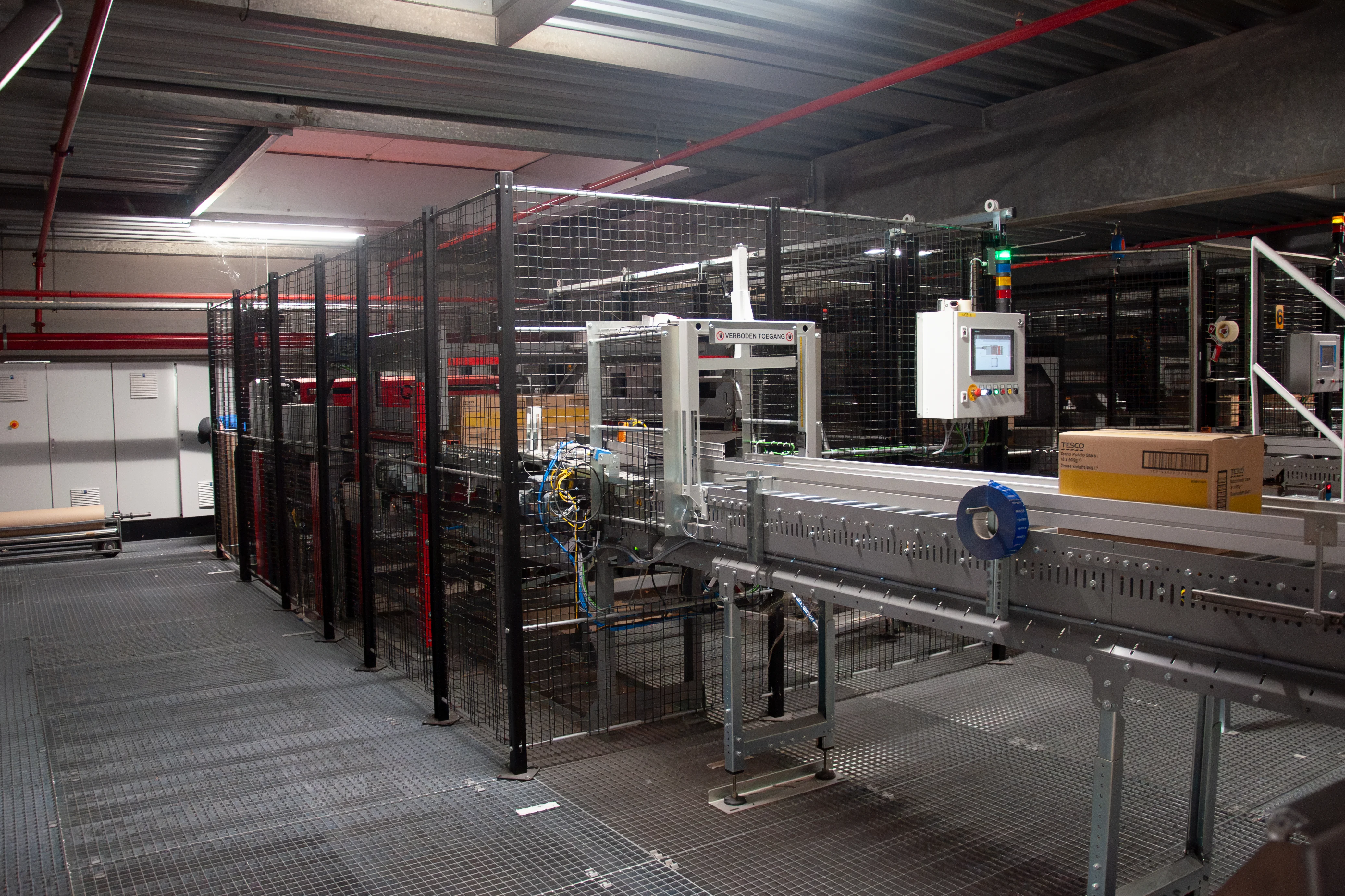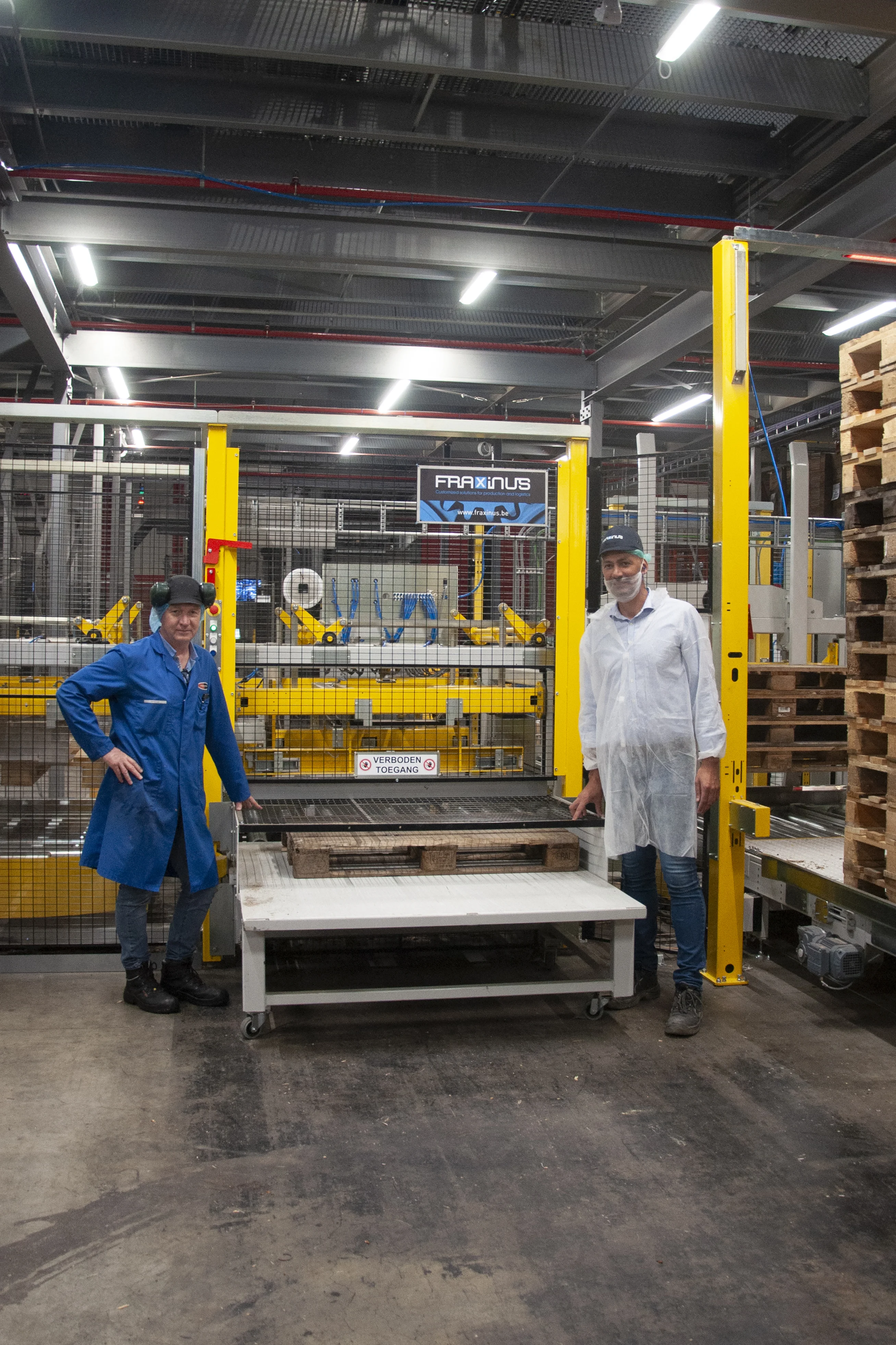We continued the work on an existing installation. Can you briefly outline the project?
“We already had six palletisers with a pallet dispenser that can offer three different types of pallets. In order to produce more pallets per hour, we planned to install a seventh packaging machine in the same space. To keep the production stoppage as short as possible, it was necessary to work in phases. That’s why, in the first phase, the existing pallet dispenser was moved and a lift was installed. This had to be done in a time span of just two days so that production for those six machines could restart. Then, in phase two, the seventh palletiser was built. Finally, in phase three, two additional pallet dispensers with pallet control were installed between the third and fourth palletisers to cope with the additional packaging capacity.”

